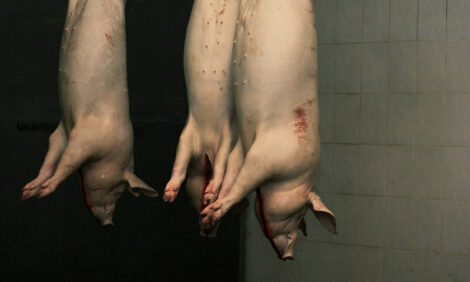



New approaches to influenza control look promising
Influenza-A virus of swine (IAV-S) is a thorn in the side of US pork producers, and it’s a difficult thorn to remove. If the virus were more pathogenic, veterinarians and producers would probably talk about it more, said Aaron Lower, DVM, with Carthage Veterinary Service, Carthage, Illinois.Break rates are quite high in growing-pig and sow-farm populations, and epidemiology can be challenging. However, new strategies for controlling the virus show promise, Lower told Pig Health Today.
The number of strains, lineages and clades for IAV-S can complicate control, and it’s often difficult to know how animals contract the virus. Lower pointed out IAV-S could come in with the people who work in the operation, with the replacement gilts or simply through aerosol transmission. As a result, veterinarians are more likely to manage the virus rather than try to prevent it.
Differences between sows and growing pigs
“Generally, we worry about two things with regard to sows,” Lower said. “One is protection of the sows, particularly negative reproductive consequences of infection.”
The other is endemic suckling pig populations, which means turning out IAV-S-positive pigs week after week, he said.
With growing pigs, “We just put our head down and either use anti-inflammatories or antibiotics to get through those infections,” Lower said.
Interventions critical
In the sow farms, Lower said he strategically utilizes autogenous vaccines.
“There are seven or eight strains that we’ll commonly get in different clades, so there is tremendous variation that continues to diversify,” he said.
Control strategies vary geographically, but Lower said he will typically do two mass vaccinations at sow farms.
“We’ll vaccinate those sow farms in the fall, trying to be predictive of what strains we think we’re going to see. Then, if we find flu in suckling pigs, we utilize an autogenous, homologous vaccine pre-farrow to try to eradicate it out of suckling pigs,” Lower said.
He indicated that this intervention has not always been satisfactory, so he is trying new options.
Prime and boost
“Our newest approach is what we call ‘prime and a boost,’” Lower said. “You can put three to four antigens maximum in most flu vaccines, but as I said, we see seven or eight [on farms]…, and we can’t make these sows a pincushion.”
Research in the last few years supports the prime-and-boost strategy, Lower said. Instead of vaccinating with three or four strains and then coming back with the exact same three or four strains, prime and boost involves vaccinating the second time with a different combination of strains. Understanding strains in the regions involves “a lot of sequencing and trying to understand autogenous technologies” to accomplish that.
Pointing to research with this integrated approach, he said a more practical solution might be to “use a commercial [vaccine] and then come and follow up with an autogenous to catch some of the other common strains. And that research has worked well.”
The strategy is used in both sows and replacement gilts, Lower explained.
“We used this approach in [about] 45 sow farms this year, and we’ve been really happy with it so far,” he said. “We’ve generally been within 2% of all the strains we’ve commonly seen, and we’ve only had one or two farms that have had some sow mortality associated with influenza.”
Although Lower has used the prime-and-boost approach for just 1 year, he said it’s a strategy they’ll employ again next year.
Different strategy with growing pigs
The more common clinical presentation of IAV-S has been the endemic suckling pigs. “Generally, as farms break, you’ll see some activity in sows and in all the piglets,” Lower said.
With time, the sows stop shedding. He will see pigs that look great up through 12 or 14 days, and then they start coughing right before weaning. Post-wean, Lower said the pigs are slow-starting and exhibit depressed growth with some fall-off and mortality.
“That has become the common clinical presentation, and we’ve put in a couple of strategies to eradicate the virus out of the farms,” he added.
Coupling the strategies of vaccination, limited pig movement, and washing/disinfecting sows to remove any IAV-S from their mammary glands before they are moved, Lower said they can generally eliminate IAV-S from sucking pigs in one turn of the farrowing house.
Take the necessary steps
With larger farms, IAV-S is unlikely to go away on its own without interventions, Lower said. Conventional thinking had the gilt pool as a likely source, but Lower said suckling piglets are the more important component. Still, a negative gilt population is important to keep IAV-S from circulating in the gilt-development unit.
His advice to producers is to try to identify where the virus is coming from. Educate staff members on how to avoid bringing IAS-V into the farm. In addition:
- Routinely monitor the gilt population and try not to bring the virus onto the farm.
- Understand autogenous technologies and how vaccines can be used to mitigate IAV-S. Look also at how commercial vaccines can be used in a prime-and-boost strategy.
- Work to remove IAS-V out of suckling pigs.
“You have to be aggressive with those two strategies of homologous vaccination and limited pig movements, but you can get [IAV-S] out of there,” Lower says. “Most of our producers want to be aggressive in trying to eliminate flu out of sow farms.”
Even with good control measures, it’s possible to have a new strain in the future, so producers and veterinarians must remain vigilant.






